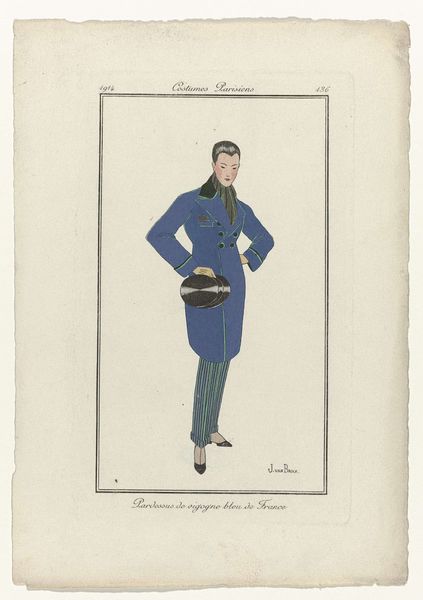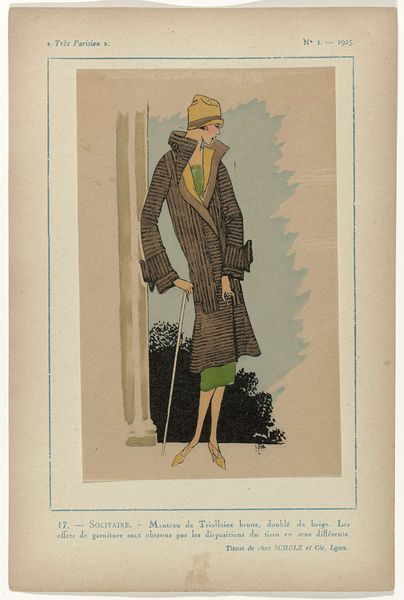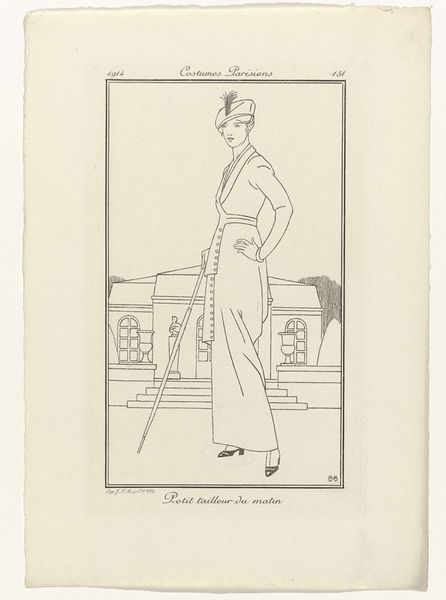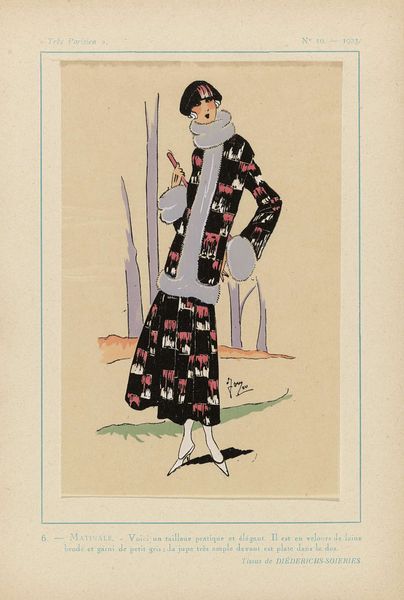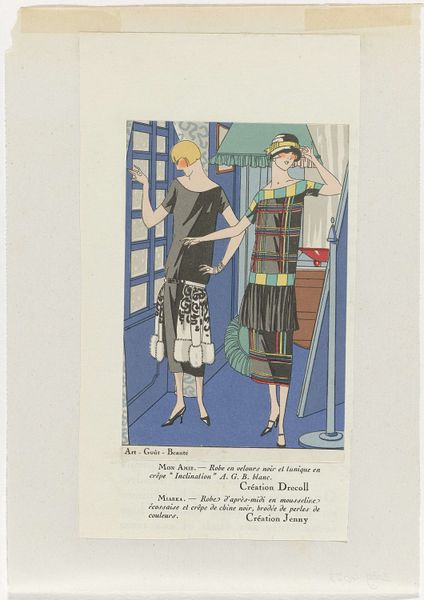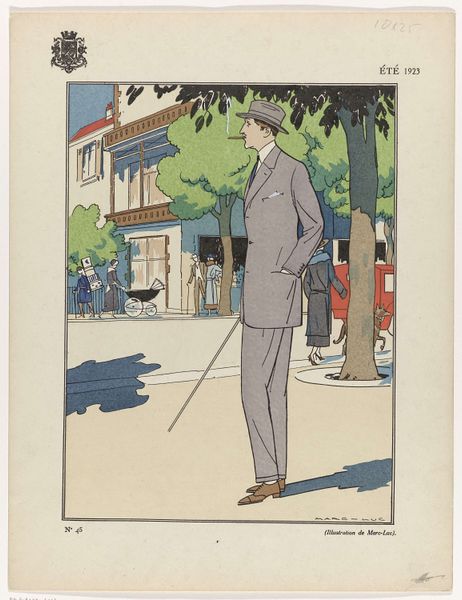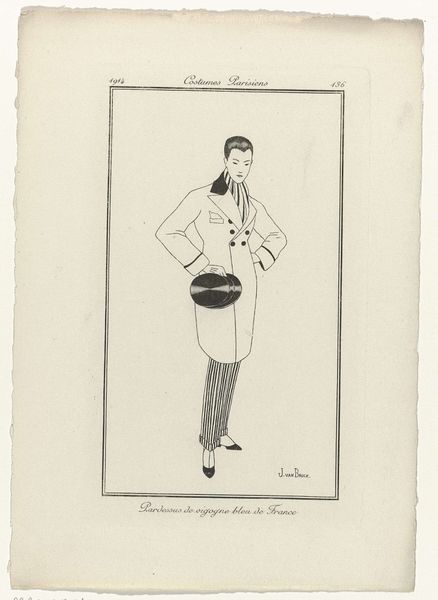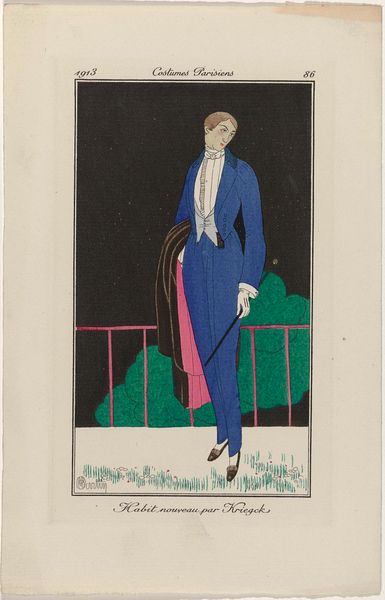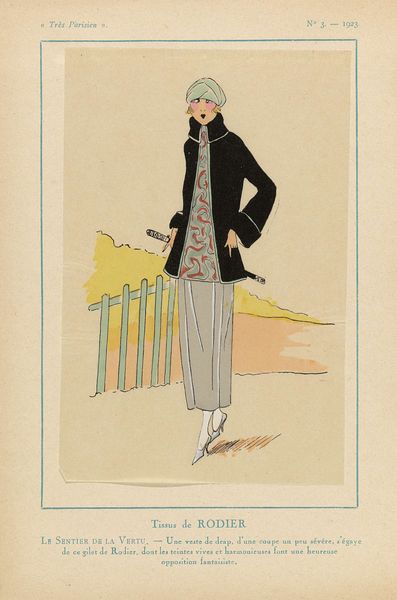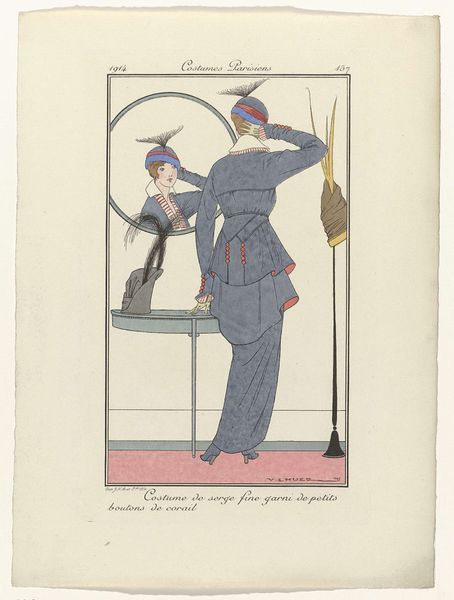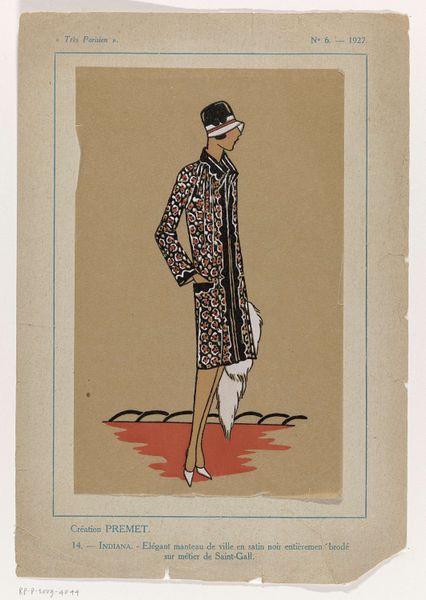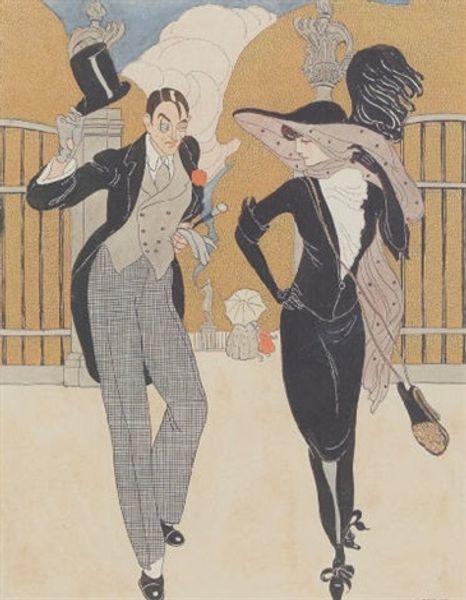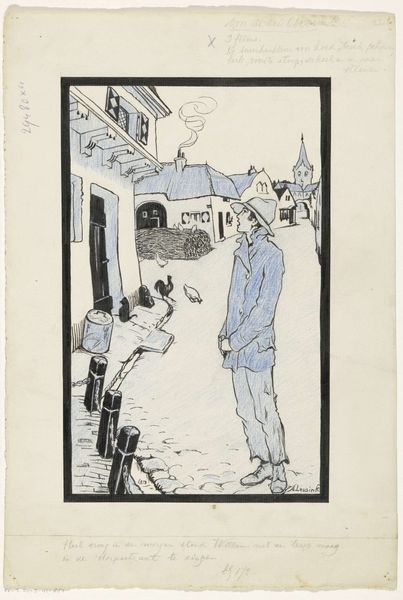
Journal des Dames et des Modes, Costumes Parisiens, 1913, No. 77 : Tenue de matin 1913
0:00
0:00
drawing, ink
#
portrait
#
drawing
#
art-nouveau
#
figuration
#
ink
#
cityscape
Dimensions: height 179 mm, width 110 mm
Copyright: Rijks Museum: Open Domain
Curator: Here we have a work titled "Journal des Dames et des Modes, Costumes Parisiens, 1913, No. 77 : Tenue de matin" created in 1913. Bernard Boutet de Monvel is the artist, and it seems the piece is made from ink drawing, depicting a fashionable figure in a cityscape. Editor: What immediately strikes me is the palpable air of early 20th-century Paris! It's all there – the crisp lines, the bowler hat, and even the unassuming backdrop of street art. There's a self-awareness in that gaze that intrigues me. Curator: Indeed, Monvel perfectly encapsulates a moment within the sartorial and social history of Paris. You see it reproduced as plate number 77 in the famous Journal des Dames et des Modes, showcasing the pinnacle of morning attire. This imagery perpetuated an elitist perspective and maintained strict boundaries about gender and class. Editor: Absolutely. The man stands stiffly, almost mannequin-like. His cane seems less functional, more an extension of an outfit deliberately constructed to display status. He's deliberately strolling along the Parisian boulevards. The image makes a subtle statement about who gets to participate in city life. Curator: Precisely. The work offers itself to cultural criticism that considers fashion as a tool that created cultural identities based on consumerism. It seems that even street vending here catered only to the affluent members of the population. This representation serves not only to mirror these social dynamics, but actively participates in solidifying them, excluding entire sections of the population. Editor: I hadn’t considered the commercial context that strongly. What seemed charming about “old Paris” takes on a different edge with that awareness. We're not just looking at a costume; we're witnessing a cultural code being broadcast, both in the moment and to posterity. Curator: It highlights the intrinsic role art and fashion played in defining Parisian societal structure. Looking closely makes one realize the deliberate curation of this entire experience. The man is on display, and, in turn, embodies the politics of class and access. Editor: So, from a seemingly innocuous fashion plate, we glean insights into a complex historical framework of privilege. Makes you think twice about your morning attire, doesn't it?
Comments
No comments
Be the first to comment and join the conversation on the ultimate creative platform.
